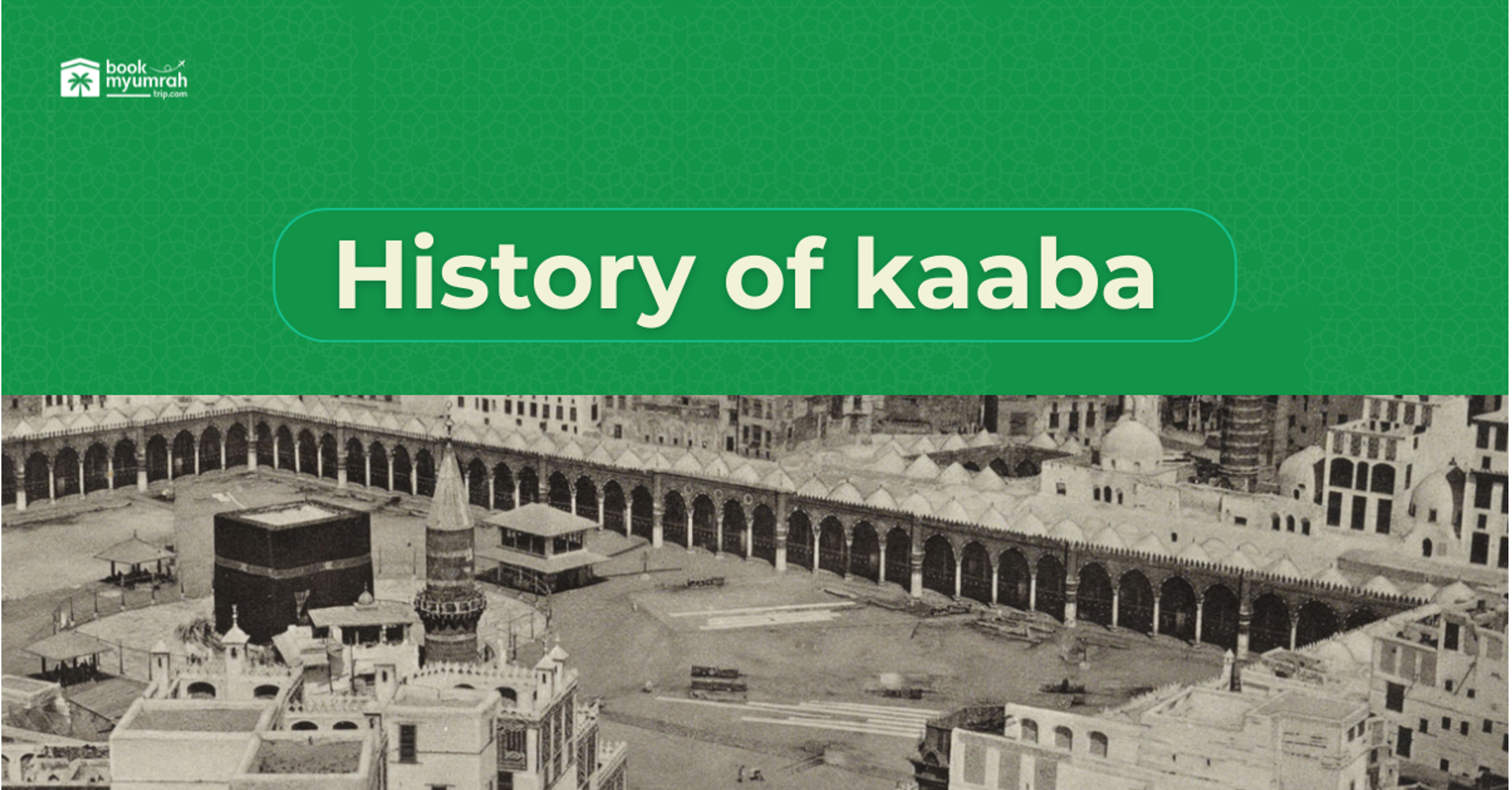A Journey Through Time: 7 Key Moments in the History of the Kaaba

In the heart of Makkah, located a sacred place ’The Kaaba.’ To perform prayers, millions of Muslims turn their faces towards the Kaaba.
A cube-shaped building is a symbol of faith, unity, and submission to Allah (S.W.T.).
The one who explores the history of the Kaaba finds a connection between this sacred site and the life of every Muslim.
The Kaaba has a long history. It takes you back thousands of years.
It has many upgrades, and Allah (S.A.W.) safeguarded and nurtured it over the years. It's more than an ordinary historical building. Its journey teaches Muslims about faith and not giving up. Many events in this journey changed the history of the Kaaba. Today, it has become an eternal symbol of Islam.
The Kaaba: A Sacred Foundation from the Time of Prophet Ibrahim (AS)
The Kaaba has a long history. Many years after Adam (A.S.), the Kaaba's foundation had worn away. To build the holy House of Allah, Allah picked Ibrahim (A.S.) and his young son Ismail (A.S.) to assemble the Kaaba back together.
They said a dua with each block that can still be heard today.
"Our Lord, accept this from us, for surely you are the one who hears and knows everything "(Ref- Surah Baqrah- 127).
The Kaaba in the Pre-Islamic Era: A Center of Pagan Worship
In the pre-Islamic era, many tribes of Makkah considered the Kaaba a sacred site. They used to believe in many gods and worshipped more than 360 idols and the deities. This holy site became a center for pagan worship. It showed how important the Holy Kaaba was in the pre-Islamic period.
The Cleansing of the Kaaba: The Triumph of Islam
After the years of hardship and persecution in 630 CE, Prophet Mohammed (S.A.W.) returned to his city with his followers with a mission to destroy the 360 idols surrounding the Kaaba to restore its original purpose. One by one, he dropped all the idols and made it once again the House of Allah alone, untouched by corruption. This moment was marked as the victory of Islam and monotheism after ages dominated by paganism and idol worship. With many changes in the history of the Kaaba, it is now restored for the worship of Allah (S.A.W.).
The Kaaba's Transformations: Reconstructions and Renovations Through the Ages
The Kaaba, a sacred place of worship in every era, had faced many damages and conflicts. It required repair and reconstruction over time. Many rulers were there who built the Kaaba.
Reconstruction by the Quraysh before Islam: The Quraysh was the tribe of Makkah, who built the Kaaba after floods before the Prophethood of Muhammad (peace be upon him). The Prophet (S.A.W.) settled an interpersonal dispute to place the Black Stone. With his wise and fair decision, he asked all the leaders to hold and lift it by placing it on a cloth.
Abdullah ibn al-Zubair (R.A.)'s construction of the Kaaba: One more time, the Kaaba was besieged and damaged by stones and ballistae. Abdullah ibn al-Zubair (R.A.) was the ruler of that time, who built the Kaaba and modified it. As per the wish of the Prophet (S.A.W.), he rebuilt the Kaaba in a rectangular shape and included the Hatim area inside the Kaaba.
During the reign of the Ottoman: Sultans Süleyman I and Selim I, the Kaaba underwent many changes. The flat roof was replaced with domes, and seven minarets were added. The mosque was rebuilt in 1631 after being damaged by floods. It now has large open spaces with colonnades. A new marble floor and domes with calligraphy on them made the inside look better. These changes have made the mosque's current grand structure, with the Kaaba at its center.
They made the foundation even stronger and stronger over time. They also fixed the damage caused by floods and covered it with a beautiful black cloth (Kiswah), which shows both respect and devotion.
The Kaaba's history shows how much Muslims cared for and respected this holy place for many generations.
The Kaaba Today: A Global Symbol of Unity and Faith
Billions of Muslims visit Masjid al-Haram to perform Hajj and Umrah. They complete all the rituals and circumambulate around the Kaaba, which shows the equality before Allah (S.W.T.). All Muslims, to pray Salah five times daily, face towards the Kaaba. It shows oneness and unity. It connects all the Muslims globally.
Key Events and Miracles Associated with the Kaaba
Magnetic Force: There is an intriguing magnetic energy around the Kaaba. It prevents birds and aircraft from passing above it.
The Design of the Golden Ratio: People built the Kaaba thousands of years ago without any modern tools. The construction of the lengths of the walls of the Kaaba fits with the Golden Ratio (≈1.618). It is a mathematical idea that shows great wisdom and perfection.
The Year of the Elephant 570 CE: The king of Yemen, Abraha, with his army of elephants, marched towards the Kaaba to destroy it. But Allah took very good care of His holy House. He sent swarms of birds called Ababil that threw stones at Abraha's army, ruining their plans and showing that God was involved. (Ref. Surah Al-Fil).
The Spiritual Significance of the Kaaba: More Than Just a Structure
The Kaaba is not a physical structure; it is a place of spiritual worship for Muslims.
From every corner of the world, all Muslims face the Kaaba for prayer. Here you will get a sense of discipline, unity, and direction.
FAQs
How is the golden ratio connected with the Kaaba?
The Kaaba's design has a fascinating aspect you will see that its rectangular shape closely approximates the Golden Ratio.
Do I have to go around the Kaaba during Tawaf?
This is an action that you have to perform as a ritual of the Hajj and Umrah. As a pilgrim, you have to walk seven times around the Kaaba.
How old is the Kaaba?
It is difficult to determine 'how old the kaaba is'. It is believed to be around 5,000 years old.
Who built the Kaaba?
The holy house of Allah (S.A.W.), ‘Kaaba,’ was built by Prophet Ibrahim (Abraham) and his son Prophet Ismail (Ishmael) as the first house of worship dedicated to Allah.


